The special wind pattern in the Mingsha Mountain area, which has three different wind directions with similar strength, is created by a combination of atmospheric circulation and surrounding topographical barriers. This results in the formation of many dunes in the Mingsha Mountain area.
(a) During winters and springs, the northwest wind prevails, causing surface wind-blown sand to flow to accumulate and increase in height due to vegetation or terrain fluctuations.
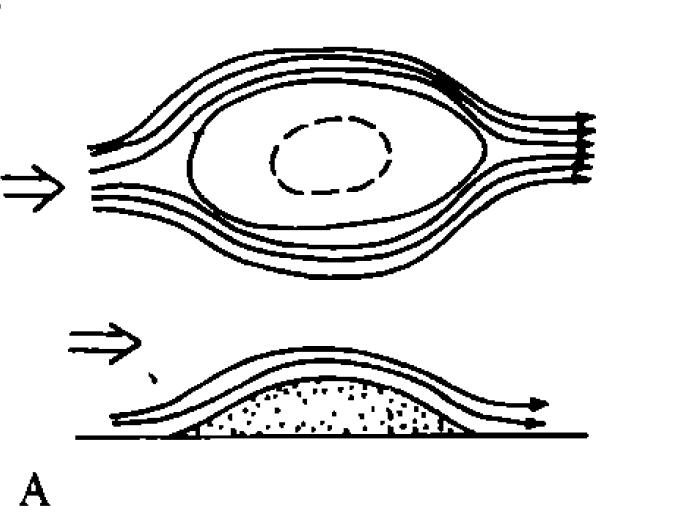
(b) As sandpiles continue to develop and terrains become increasingly undulating, the airflow from both the top of the sandpiles and around their sides creates vortices on the leeward slope of the sandpiles, causing sand particles to accumulate on either side of the rear part of the sandpiles. This results in the formation of horseshoe-shaped depressions on the leeward slope of the sandpiles. If the wind speed and sand volume continue to increase, small depressions on the leeward slope of the sandpiles will further expand. The sand particles brought by the wind from the top and sides of the sandpiles will continuously accumulate on both sides of the rear part of the sandpiles under the action of vortices, forming an initial crescent moon-shaped sand dune.
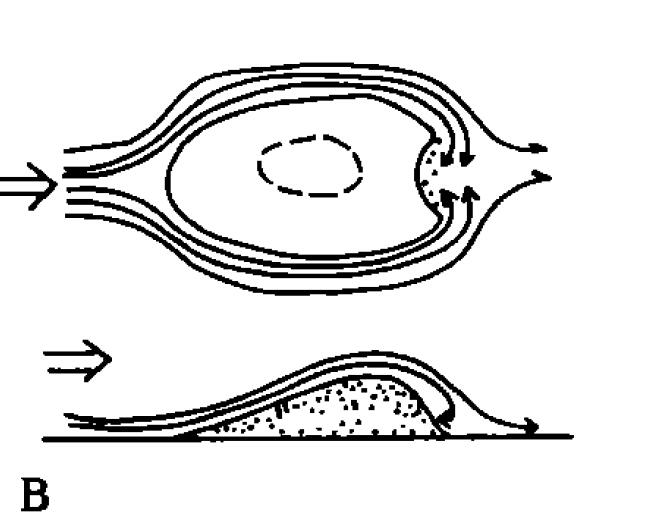
(c) As the dune continues to increase in height, the vortex flow on the leeward side becomes stronger, and the airflow separation becomes more severe, causing the original shallow horseshoe-shaped depression to expand.

(d) The airflow passing around both sides of the sandpile carries sand particles forward and eventually accumulates them to form a crescent moon-shaped dune.
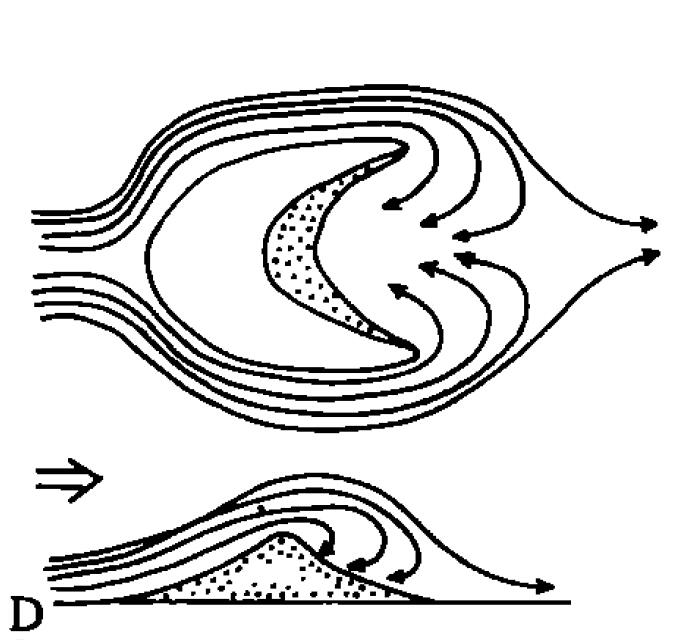
(e) During summers, the prevailing northeast wind changes direction and intersects with the existing crescent moon-shaped dune. As before, small gaps form on the new leeward slope and continue to expand.
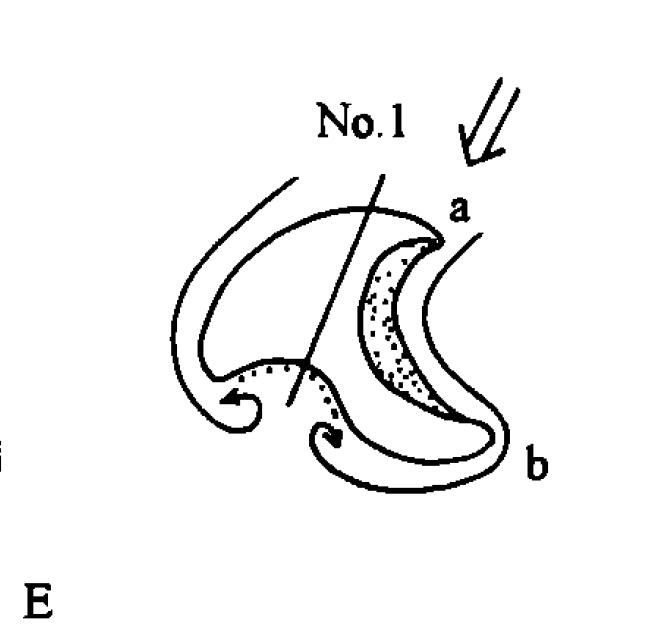
(f) As the windy season comes to an end, the dune evolves into a dune with two slip faces and a tongue-shaped protrusion.
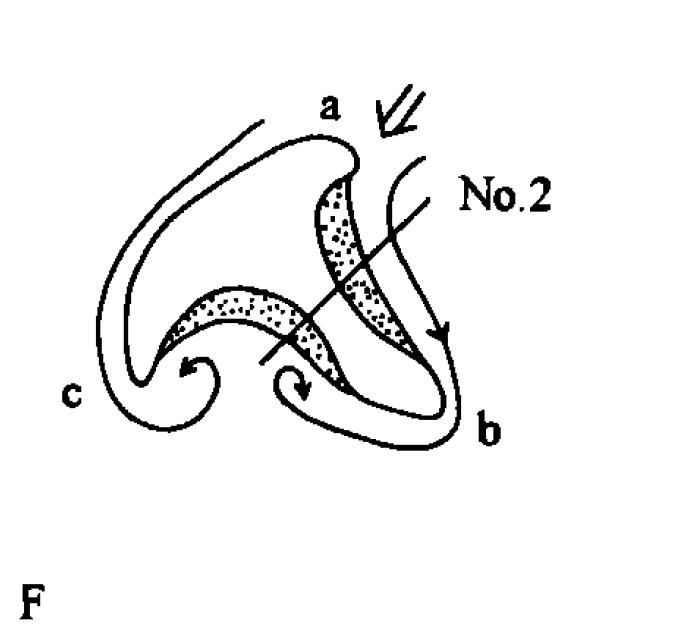
(g) During seasons when easterly and westerly winds prevail, mountain winds and southerly winds formed under the influence of local topography cause the dune to form new slip faces on the leeward side, creating the embryo of a pyramidal dune.

(h) As the later airflow continues to transform the embryo of the pyramidal dune, the dune eventually takes on the typical shape of a pyramid.

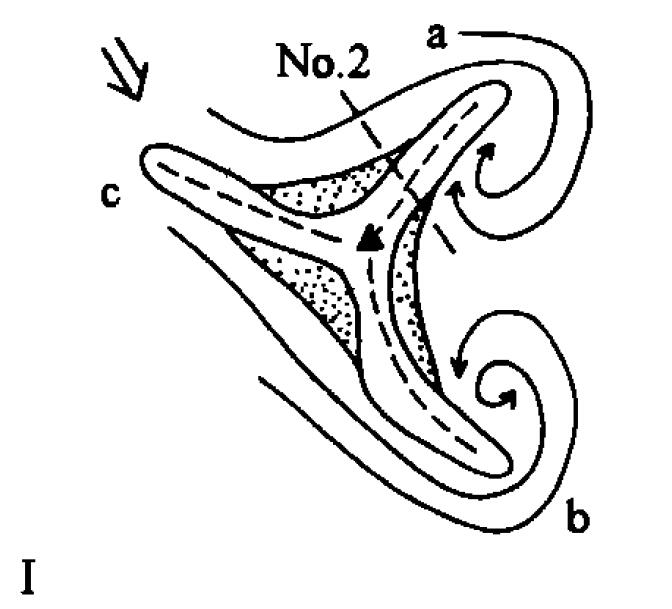

 简体中文
简体中文
